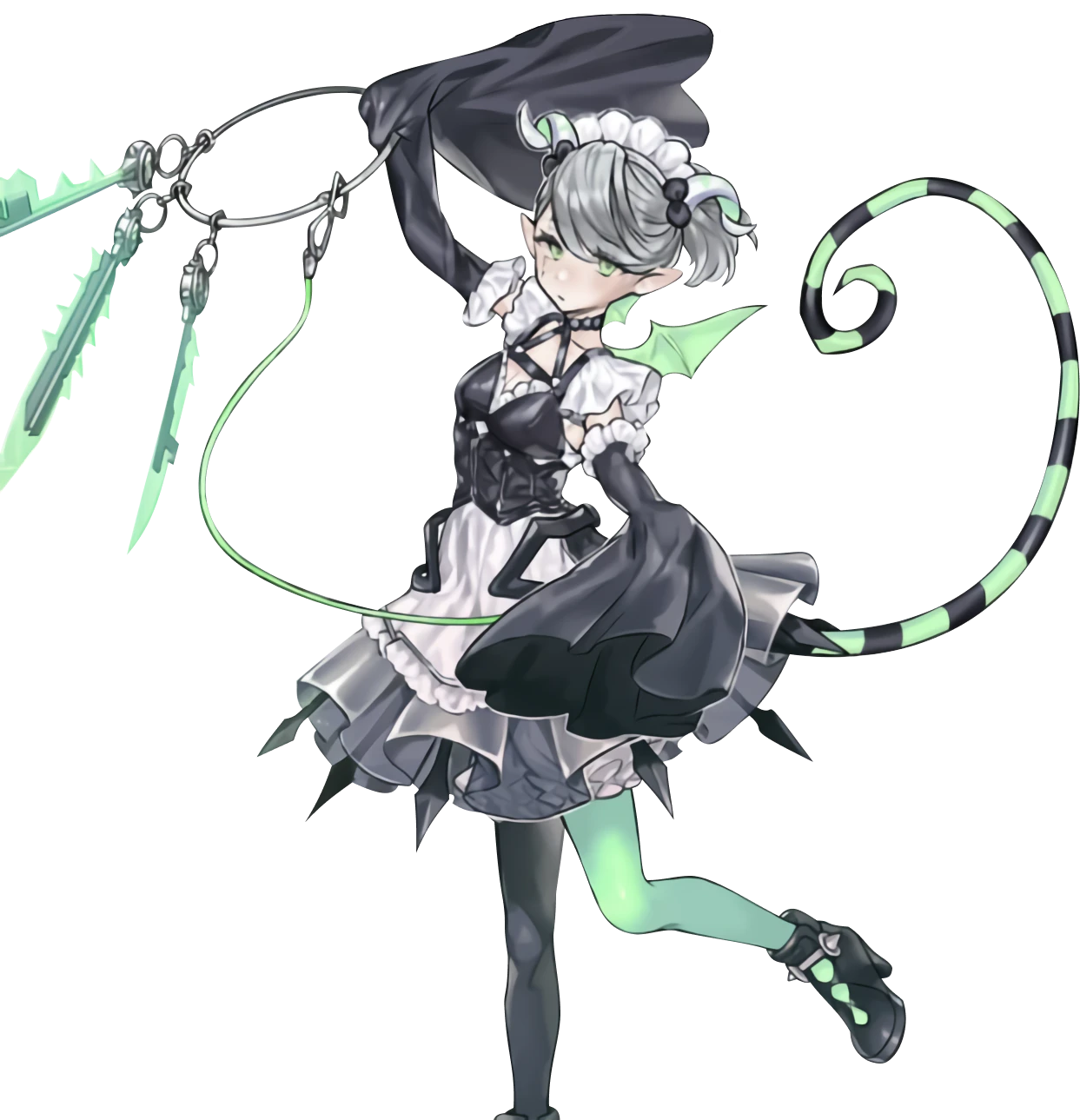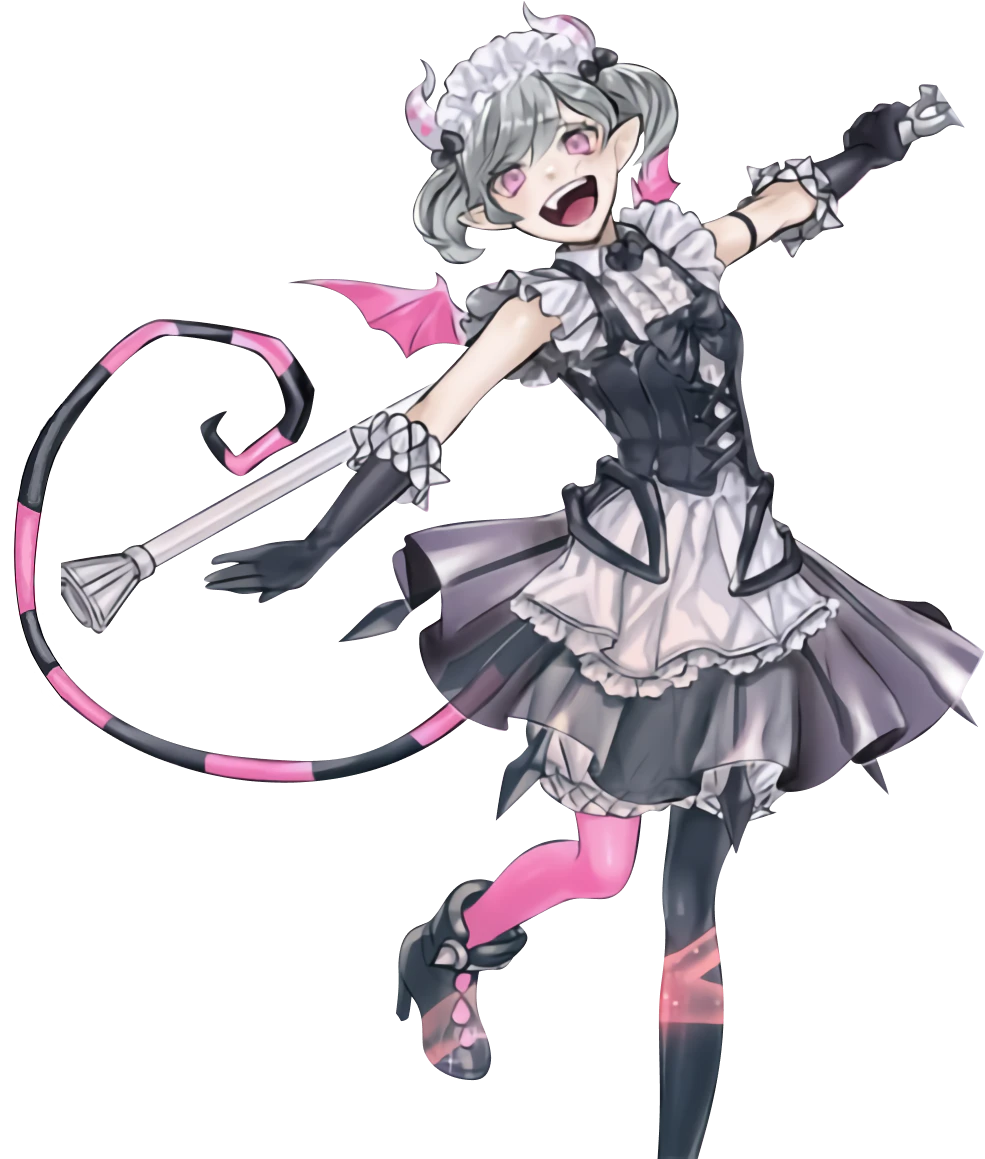Labrynth Cards
This breakdown aims to explain the role of every card, it however does not recommend exact ratios, as these depend on the version and engines you plan to play. Please refer to the guide for the specific engine/version as those will contain more guidance on them. Many ratios are personal preference, so do not hesitate to play whatever works for you.
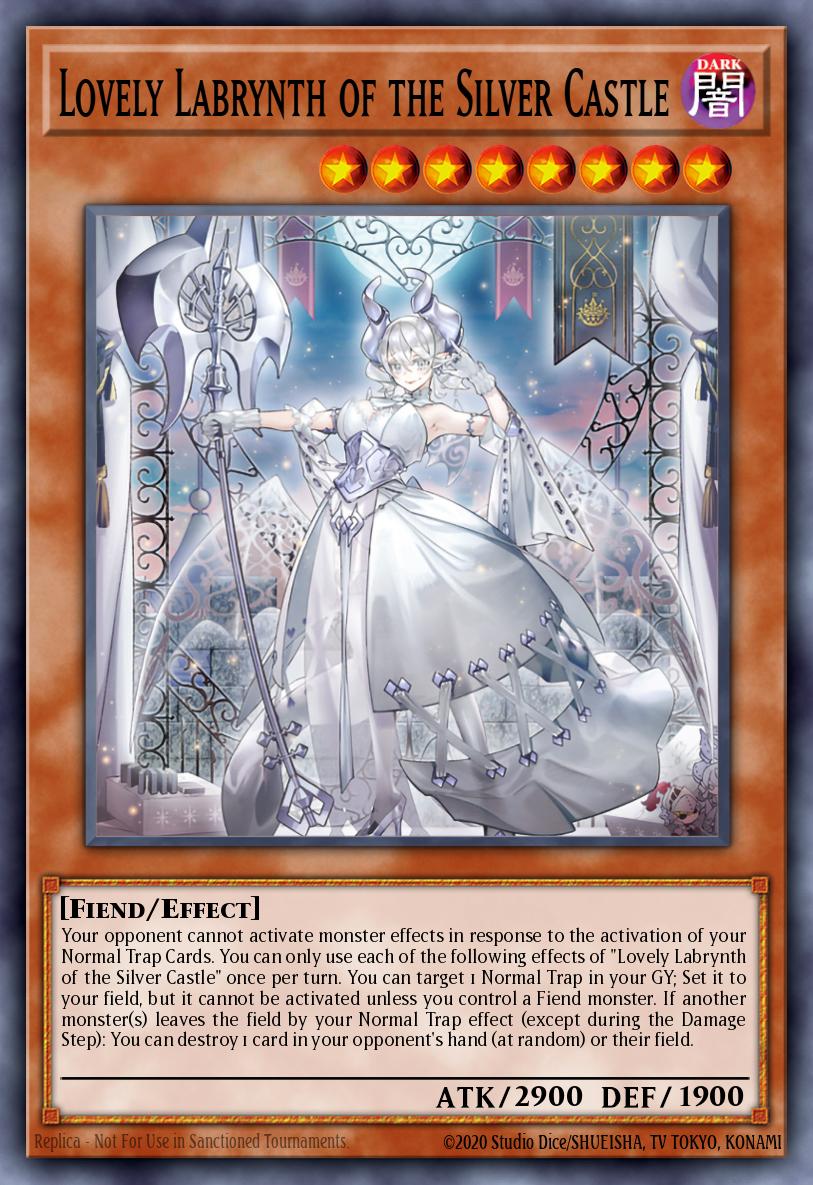
Your opponent cannot activate monster effects in response to the activation of your Normal Trap Cards. You can only use each of the following effects of "Lovely Labrynth of the Silver Castle" once per turn. You can target 1 Normal Trap in your GY; Set it to your field, but it cannot be activated unless you control a Fiend monster. If another monster(s) leaves the field by your Normal Trap effect (except during the Damage Step): You can destroy 1 card in your opponent's hand (at random) or their field.
Our most lovely brick lady and the main boss monster the archetype revolves around. She is our main source of removal outside of traps and is the reason why they are able to resolve most of the time. She is the heart and soul of the deck, giving our traps extra value while giving us the ability to recycle them as long as she is on the field. Without her, the deck just wouldn’t be able to function as effectively as it is.
- The (1) effect is a continuous effect that makes it so your opponent can’t respond to the activation of normal traps with monster effects, making this effect vital in making sure your traps actually resolve, be it protecting your welcome traps from any stray ghost girls or any negates. Just be advised that she only stops your opponent from responding to normal trap activations, so any trap that has an effect in the GY can still be responded to, for example, the second effect of “Big Welcome Labrynth” to bounce a monster on field.
- The (2) effect contributes a lot to our ability to grind, giving us the ability to reset any normal trap in our GY. But do be careful, if you want to be able to activate the trap you reset, you must control a fiend monster, so it’s best to remember this part of the effect so you don’t accidentally cheat.
- The (3) effect is our main source of removal outside of the traps themselves, being a non-targeting destruction removal that can hit either any card on the opponent’s field or a random card in their hand, as long as a monster left the field by a normal trap’s effect. It’s an incredibly powerful effect that can deprive the opponent of resources by removing cards from their hand or remove a key piece to their combo. Just make sure not to fall into the trap of only going for the handrip, save the effect for disrupting your opponent’s plays and only go for the handrip when there are no important targets on the field. Also, try to be careful against decks that have cards that trigger when they are destroyed or have GY effects. You don’t want your opponent to go full combo because you accidentally sniped their Tearlaments monster by mistake.
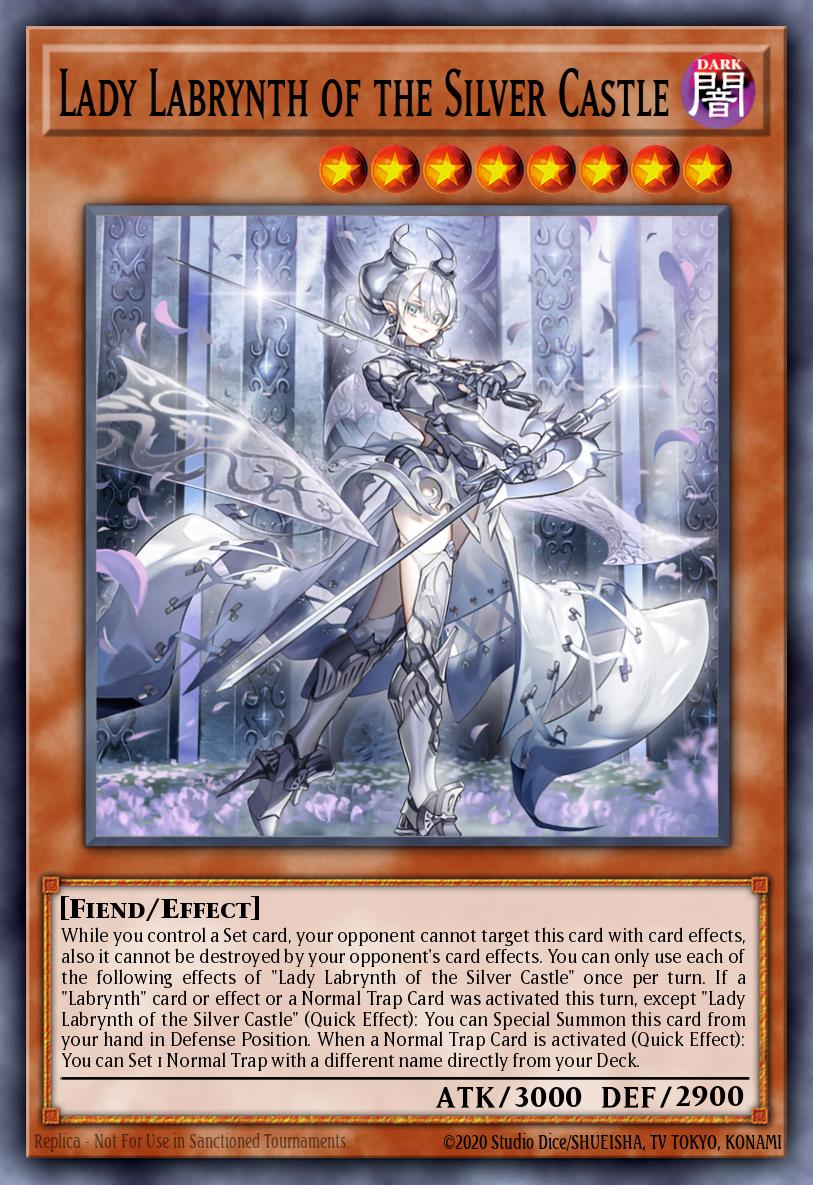
While you control a Set card, your opponent cannot target this card with card effects, also it cannot be destroyed by your opponent's card effects. You can only use each of the following effects of "Lady Labrynth of the Silver Castle" once per turn. If a "Labrynth" card or effect or a Normal Trap Card was activated this turn, except "Lady Labrynth of the Silver Castle" (Quick Effect): You can Special Summon this card from your hand in Defense Position. When a Normal Trap Card is activated (Quick Effect): You can Set 1 Normal Trap with a different name directly from your Deck.
The archetype’s second boss monster and our lovely lady’s second phase form. While she has slightly fallen out of favor due to the increase in quick effects that can block her effect to set a trap from the deck, Lady Labrynth is still an incredibly powerful card, both offensively by allowing us to grab any trap from our deck, giving us a toolbox of 1 of traps, and defensively by being a generally hard card to out that can be summoned at any time.
- The (1) effect is a continuous effect that makes it so that as long as you have any set cards (this also includes monsters and the field spell, not only spell/traps) your opponent can’t target her or destroy her with card effects, making it extremely hard for the opponent to remove her outside of battle since she can only be removed by non-targeting non-destruction effects, which are few and far between, add in her sizeable attack and defence, making her able to completely wall most other decks as long as you have set cards.
- The (2) effect is a quick effect that allows her to special summon herself as long as a Trap or a Labrynth card, or their effect, has been activated this turn (this also includes the effects and activations of your opponent). You are able to use her (2) effect on the same chain as the Trap/Labrynth card effect/activation.
- The (3) effect is a conditional when quick-effect that allows us to set a trap from the deck with a different name from the one used. This doesn’t only include your traps, so you are able to use her effect in response to a trap the opponent used, making her one of the most important cards in the mirror match. Do note that the effect is a “When (Quick Effect)” so you are able to use it only in response to a trap activated on the field, making it possible for the opponent to block her by chaining a non normal trap quick effect.
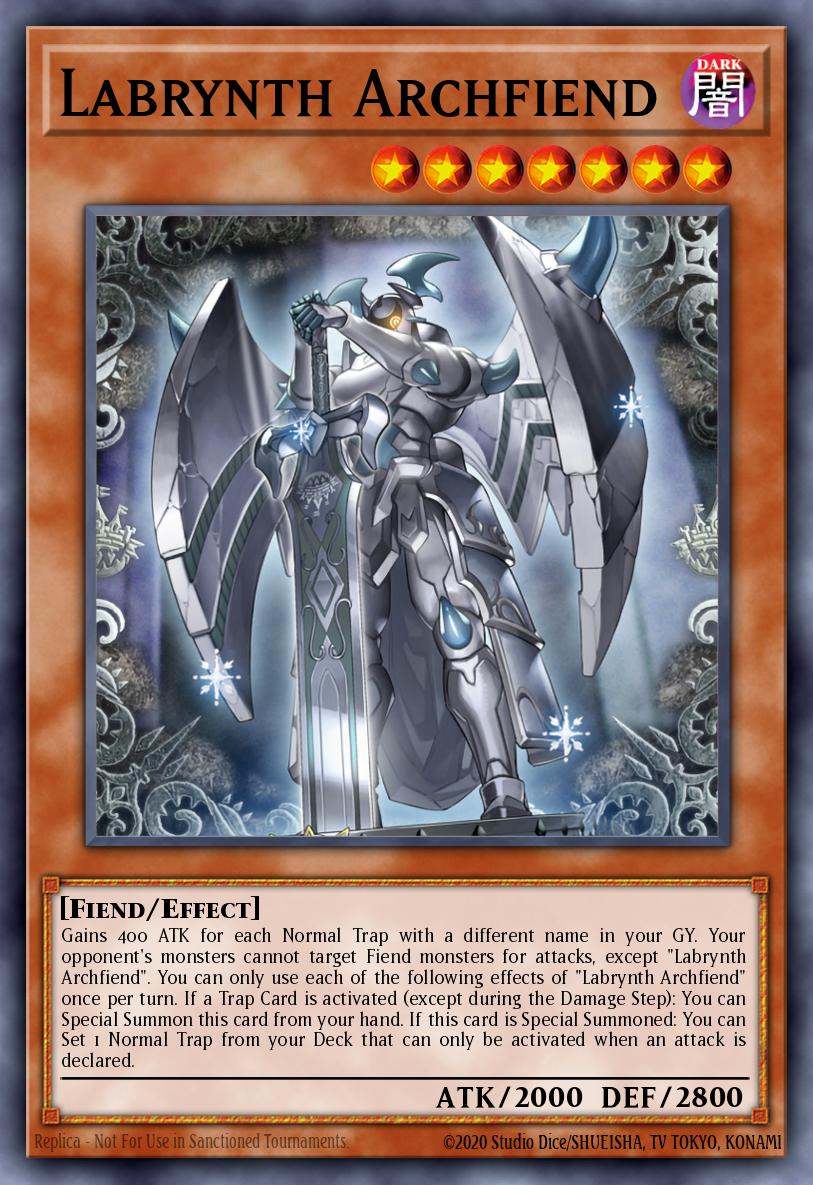
Gains 400 ATK for each Normal Trap with a different name in your GY. Your opponent's monsters cannot target Fiend monsters for attacks, except "Labrynth Archfiend". You can only use each of the following effects of "Labrynth Archfiend" once per turn. If a Trap Card is activated (except during the Damage Step): You can Special Summon this card from your hand. If this card is Special Summoned: You can Set 1 Normal Trap from your Deck that can only be activated when an attack is declared.
The black sheep of the archetype Labrynth Archfiend is often forgotten, and it’s for a good reason. This hunking mass of a living statue is not exactly a good card outside of exactly limited, despite having four whole effects. His effects are primarily focused on the battle phase, both giving him extra ATK, making it so only he can be targeted for attacks, and setting a battle trap on summon. Unfortunately, while this may sound good, battle traps haven’t been relevant for the past 10+ years, and on top of that, no inherent protection effect makes outing him extremely easy.
- The (1) effect gives 400 attack for each normal trap with a different name in the GY. This quickly gives him a huge ATK stat, as you quickly accumulate 3+ traps in your GY.
- The (2) effect is battle prevention for all your other fiend monsters, while Archfiend himself is hard to kill via combat due to his ever growing ATK stat and high DEF. The problem with this effect is that other than to protect “Barrier Statue of the Abyss” (for which there are better options), this effect is useless. Lovely and Lady Labrynth already have high stats, while the other Labrynth monsters are not worth protecting really.
- The (3) effect makes it so you can special summon him from the hand if you activated a trap. It’s a fine effect that at least lets you get him on the field easily, even if it’s not as good as Lady’s effect, as Archfiends is harder to meet the requirements for and is not a quick effect.
- The (4) effect makes it so if Labrynth Archfiend is summoned, you can set a normal trap that can only be activated when an attack is declared. This effect would be fine if battle traps weren’t a horribly outdated card type.
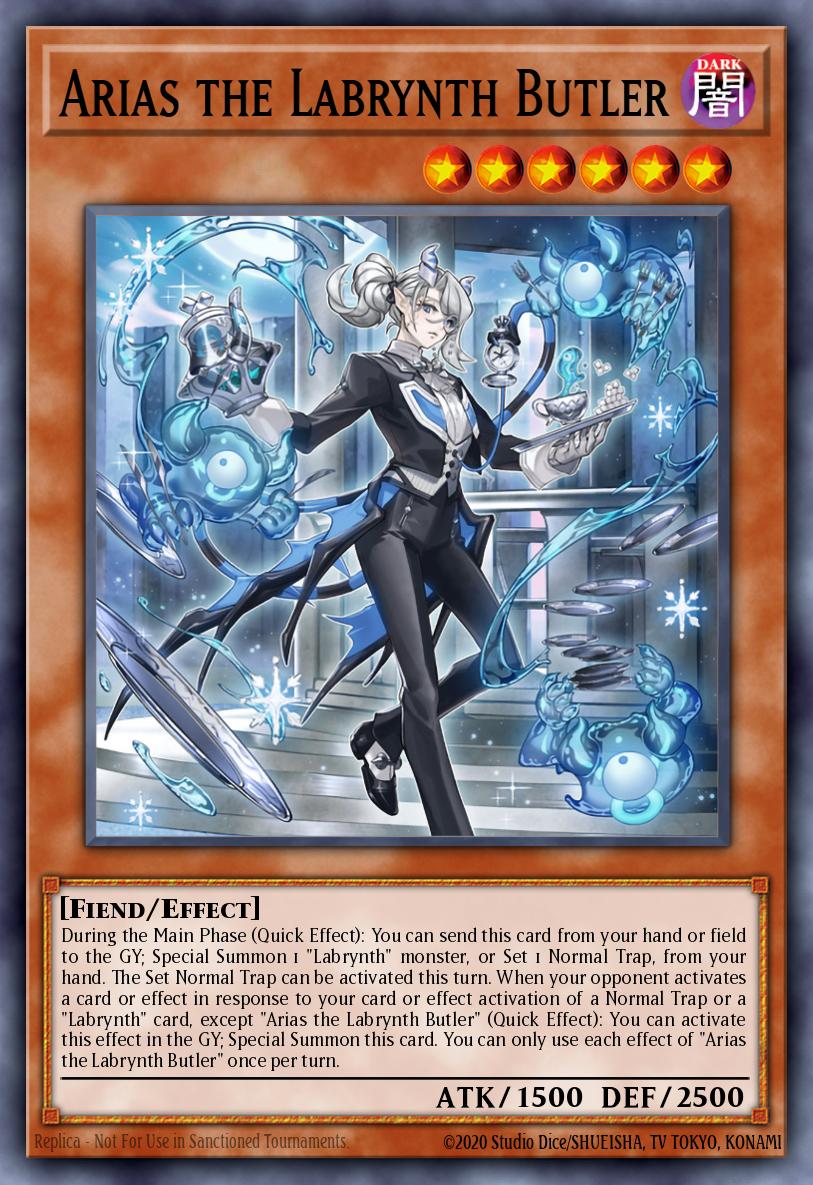
During the Main Phase (Quick Effect): You can send this card from your hand or field to the GY; Special Summon 1 "Labrynth" monster, or Set 1 Normal Trap, from your hand. The Set Normal Trap can be activated this turn. When your opponent activates a card or effect in response to your card or effect activation of a Normal Trap or a "Labrynth" card, except "Arias the Labrynth Butler" (Quick Effect): You can activate this effect in the GY; Special Summon this card. You can only use each effect of "Arias the Labrynth Butler" once per turn.
The newest servant we got and one of the twins’ bigger sisters, Arias, is one of the two “accelerator” type cards we have access to, giving us much needed explosiveness to our plays by allowing us to potentially activate any trap even on the opponent’s turn, acting as a pseudo handtrap paired with another removal trap, or a way for us to get welcome activation a turn earlier. But that’s not all, the fact she summons herself from the GY every time the opponent decides to interact with your trap and/or Labrynth effects or activations gives us much needed extra body for us to utilize our ED toolbox or for her to use her effect from field to activate another trap from hand if you haven’t already used that effect. Overall, she is an incredible card, but sometimes she can feel lackluster since her more high impact combos are usually three-card combos and requires you to build your deck around her, and she needs to be paired up with another card; otherwise, she does absolutely nothing on her own, which leads to her being a bit controversial, to say the least.
- Her (1) effect allows her to send herself from hand/field to the GY as a Quick-Effect during the Main Phase to either special summon a Labrynth monster from hand or to set a normal trap from hand that can be activated this turn (do note that you must reveal this trap). Her being limited to the Main Phase unlike the furnitures can be a severe drawback, as she always plays into Talents and Thrust, while the furnitures can simply be used during the End Phase to play around this. Therefore its worth considering to not use her effect if your opponent just passes Turn 1 without doing a lot, as using her might unbrick your opponent. Despite this drawback, her effect is still incredibly useful and flexible, giving us the speed a trap deck needs in modern times, allowing for a wide variety of plays. For example:
- Use her as a pseudo handtrap in combination with a normal trap.
- Special Summon an Arianna or activate a (Big) Welcome Labrynth before it’s your turn, giving you some early card advantage, potentially allowing for bigger Turn 0 combos
- Be able to use both Welcomes within one turn in combination with Cooclock.
- Potentially trigerring Cooclock’s GY effect if used from hand.
- Potentially unbricking your hand from any stray Lovelys that happened to end up there
- Her (2) effect makes it so every time your opponent decides to interact with your plays in any way, she special summons herself back from the GY, making her incredibly annoying to deal with for the opponent. Add to that the fact that she is a LV 6, which makes it a lot easier for us to access our toolbox ED, as she pairs quite nicely with our other servants for an easy Chaos Angel, is an extra body to link climb or potentially summoning rank 6 XYZ.

If this card is Normal or Special Summoned: You can add 1 "Labrynth" card from your Deck to your hand, except "Arianna the Labrynth Servant". If another monster(s) leaves the field by your Normal Trap effect (except during the Damage Step): You can draw 1 card, then you can apply this effect.
● From your hand, either Special Summon 1 Fiend monster, or Set 1 Spell/Trap.
You can only use 1 "Arianna the Labrynth Servant" effect per turn, and only once that turn.
The “Stratos” of the archetype Arianna is our best starter by far, letting us grab any Labrynth card from deck to hand, getting us exactly what we need for our many 2 card combos. On top of that, she also allows us to draw a card every time a monster leaves the field by a normal trap, giving us even more value if we leave her on the field. Just be advised that you can only use one of these effects once per turn.
- The (1) effect allows us, on summon, to add any Labrynth card to our hand. Nothing much to say about it, a Stratos is always good no matter what, but as for what to add, as always with Labrynth, the answer is “it depends” but most of the time it will be missing pieces to our turn 1 “combo” or just another welcome/furniture if you decide not to risk it.
- The (2) effect allows us to draw a card every time a monster leaves the field by one of our normal traps and also has the optional effect to from your hand either special summon a fiend or set a spell/trap (and unlike Arias, you don’t have to reveal what you set). This is a nice extra bonus on top of the search and can lead to easier OTKs, allowing you to bounce one of your monsters and then summon it back again for another attack, or allowing you to get Lady into attack position by special summoning her from your hand with this.
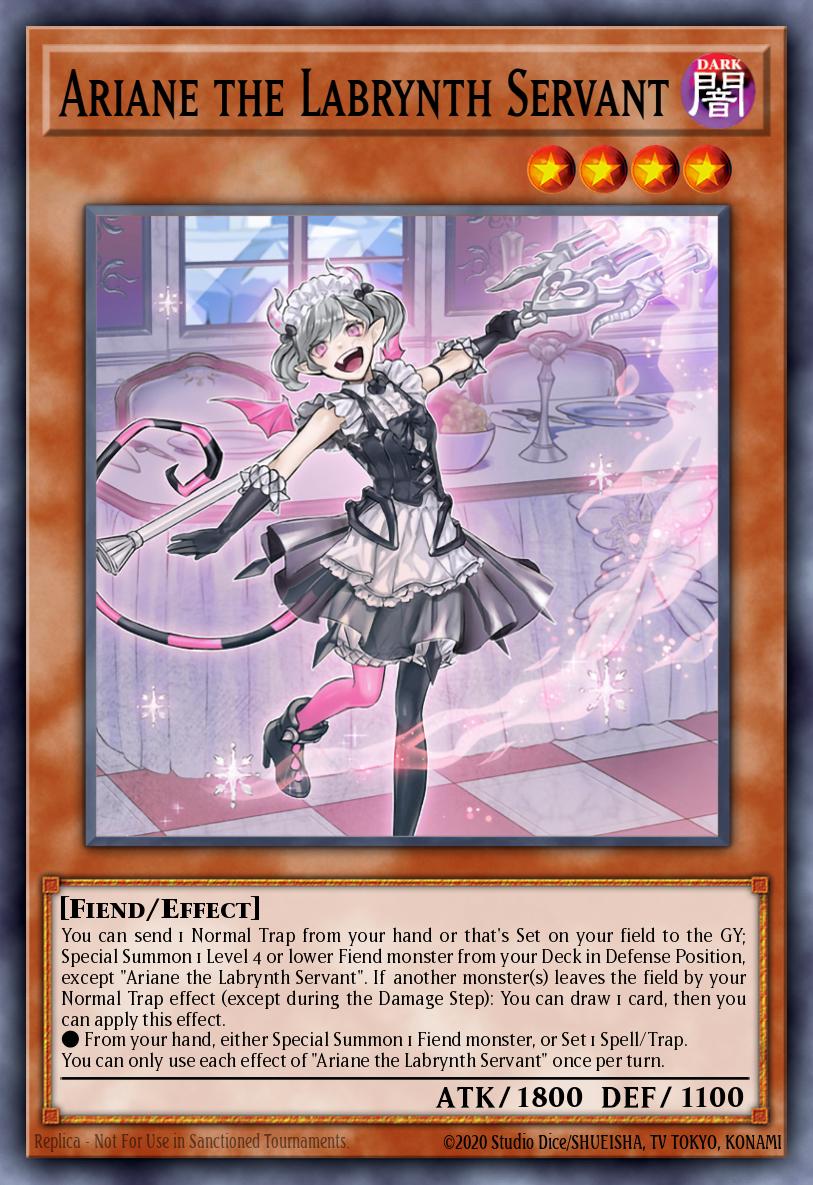
You can send 1 Normal Trap from your hand or that's Set on your field to the GY; Special Summon 1 Level 4 or lower Fiend monster from your Deck in Defense Position, except "Ariane the Labrynth Servant". If another monster(s) leaves the field by your Normal Trap effect (except during the Damage Step): You can draw 1 card, then you can apply this effect.
● From your hand, either Special Summon 1 Fiend monster, or Set 1 Spell/Trap.
You can only use each effect of "Ariane the Labrynth Servant" once per turn.
The archetypal “Tour Guide from the Underground”. This little war criminal is responsible for some truly heinous combos and allows us to generate obscene amounts of advantage… If she resolves. Her steep cost makes her a prime target for any handtrap your opponent has, leaving you in a bad position, BUT she still has her uses, being able to send any set/drawn “Transaction Rollbacks” to the GY or giving your “Big Welcome Labrynth” extra value by bouncing an Arianna and then summoning her with Ariane’s second effect, so you should still consider her. She also is also an immense help when it comes to performing OTKs, as the two effects combined allow you to easily reach 8K damage.
- The (1) effect is an ignition effect that sends a normal trap from your hand or field to GY as cost to summon ANY lvl 4 or lower fiend from deck in defense position. Most of the time, you will be summoning Arianna, but there are rare instances where you grab a furniture. Most of the time it’s only worth it if she is your only engine or you drew/set “Transaction Rollbacks”. Players have been playing around with the idea of playing Barrier Statue of the Abyss (or similar Fiend monsters with a floodgate effect) in order to focus on getting it out with Ariane during the first turn, however success of this strategy has been very hit or miss as if she gets negated you usually go very negative in card advantage, unable to recover from that position.
- The (2) effect is the same one Arianna has, which is generally used as a way to get an Arianna search on both turns by bouncing Arianna with the effect of Big Welcome or to help out in OTK-ing, but unlike Arianna, Ariane can use both effects and not only one.
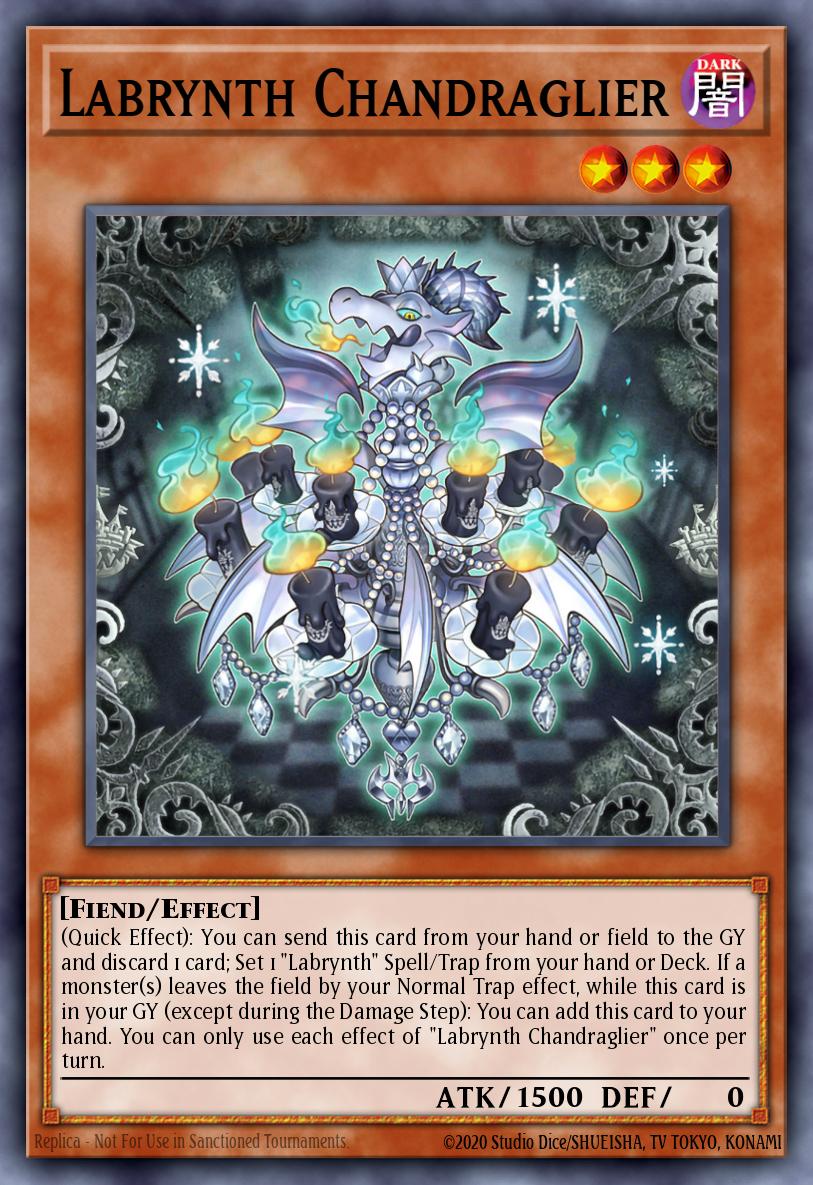
(Quick Effect): You can send this card from your hand or field to the GY and discard 1 card; Set 1 "Labrynth" Spell/Trap from your hand or Deck. If a monster(s) leaves the field by your Normal Trap effect, while this card is in your GY (except during the Damage Step): You can add this card to your hand. You can only use each effect of "Labrynth Chandraglier" once per turn.
One of 2 furnitures that have the ability to set Labrynth spell/traps from deck and/or hand. Chandraglier is an important tool we have access to, allowing us to both set up and play in any phase while also being an infinite resource loop, so getting him and Stovie Torbie in rotation as early as possible is important. While he is a bit worse than Stovie Torbie since he doesn’t make accessing the ED toolbox easier, he makes up for it by being a much safer option when it comes to securing your follow-up plays.
- The (1) effect allows you to, at any time as a Quick-Effect, send Chandraglier from the field or hand to the GY, as well as discard another card from your hand, to set a “Labrynth” spell/trap from the deck and/or hand. While this effect may be costly at first, it more than makes up for it, giving us the ability to set up our traps at any time, even during the opponent’s turn, giving the deck an amount of tempo that has never been possible with other trap decks.
- The (2) effect makes it so every time a monster leaves the field by a normal trap effect, while Chandraglier is in the GY, we get to add him back to the hand, setting up an infinite resource loop that makes it so we can keep on setting more and more Labrynth spell/traps and further snowballing out of control.
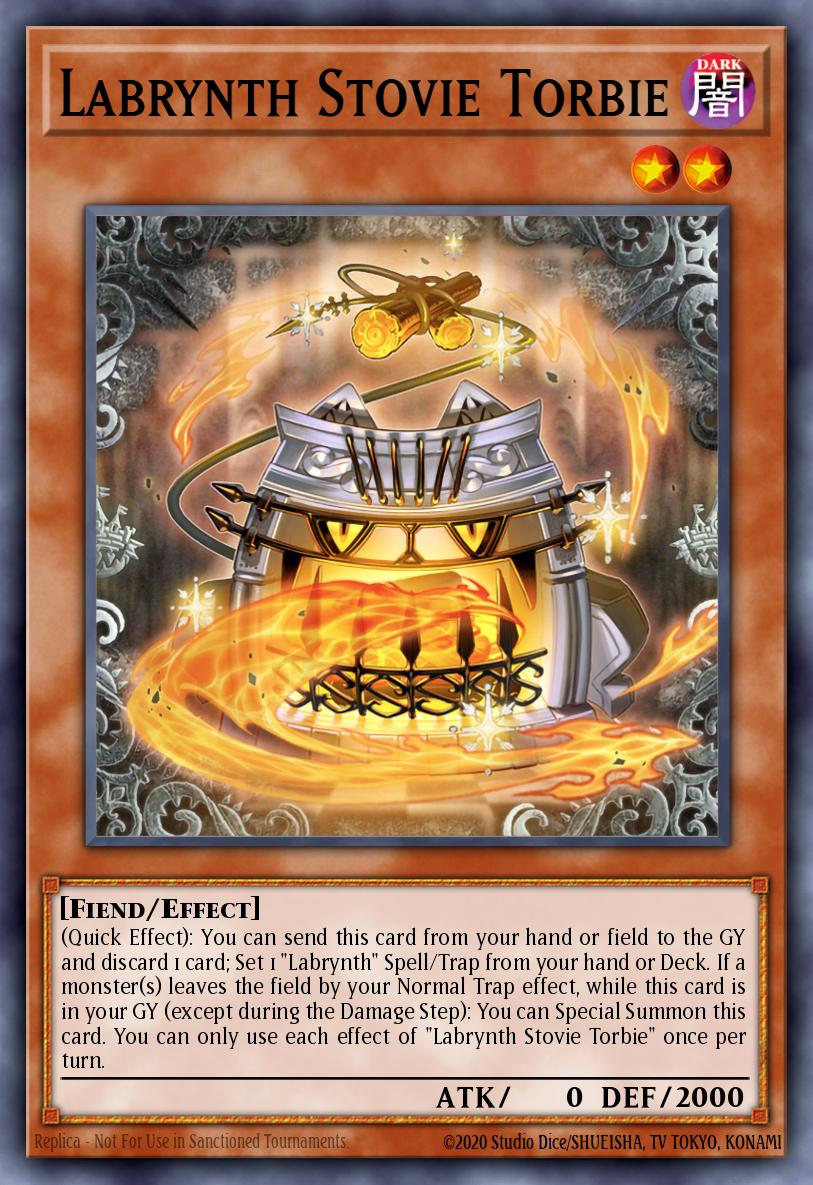
(Quick Effect): You can send this card from your hand or field to the GY and discard 1 card; Set 1 "Labrynth" Spell/Trap from your hand or Deck. If a monster(s) leaves the field by your Normal Trap effect, while this card is in your GY (except during the Damage Step): You can Special Summon this card. You can only use each effect of "Labrynth Stovie Torbie" once per turn.
The other furniture that has the ability to set Labrynth spell/traps from deck and/or hand. He works the same as Chandraglier overall and getting both into rotation is insanely helpful for our resource looop. In most situations Stovie Torbie is the better of the two since he summons himself back to the field, giving us a body for link climbing or for an easy “Chaos Angel” by using either Lovely or Lady Labrynth.
- The (1) effect works identical to Chandragliers first effect.
- The (2) effect functions the same as Chandragliers, with one important difference: Stovie summons himself to the field. This is very useful for Link plays, as well as summoning Chaos Angel, two very powerful pieces of our ED toolbox.
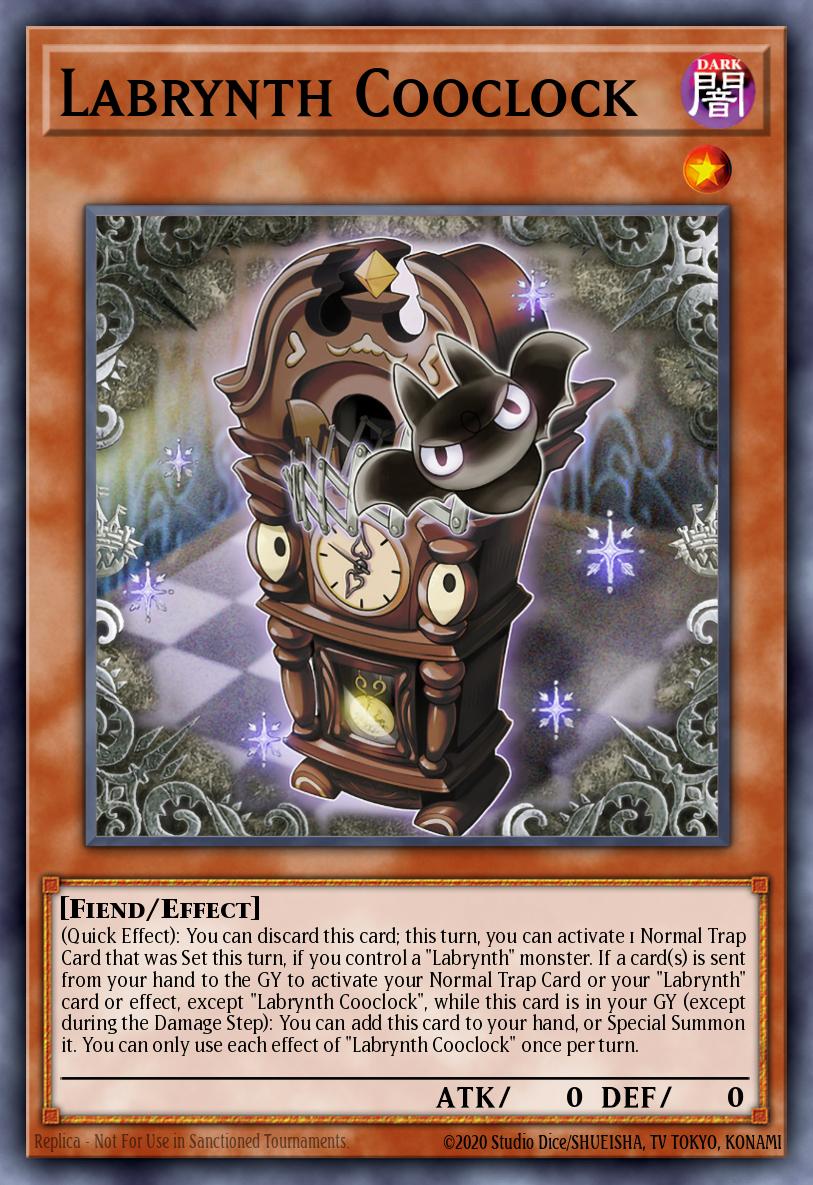
(Quick Effect): You can discard this card; this turn, you can activate 1 Normal Trap Card that was Set this turn, if you control a "Labrynth" monster. If a card(s) is sent from your hand to the GY to activate your Normal Trap Card or your "Labrynth" card or effect, except "Labrynth Cooclock", while this card is in your GY (except during the Damage Step): You can add this card to your hand, or Special Summon it. You can only use each effect of "Labrynth Cooclock" once per turn.
Our last furniture is an “accelerator” type card for our deck, allowing us to activate any normal trap set this turn (as long as you control a Labrynth monster), making it so we can start our snowball earlier than other trap decks. Cooclock combos incredibly well with the other 2 furniture, triggering his GY effect when they are discarded, while also providing a body that lets us activate the trap we just set from the furnitures or even Lady. For this reason, Cooclock allows us to do some pretty unfair things. Just be advised that he works best when paired with other furniture, so in hands that lack access to them he can be a “soft” brick.
- His (1) effects allows him to discard himself at any time as a Quick-Effect and allow us to activate any normal trap set this turn as long as we control a Labrynth monster, and unlike the other furnitures, he doesn’t need to go to GY so he can be used under shifter as long as you are fine with not being able to get him back later.
- The (2) effect allows us to special summon him from GY or add him back to our hand after we use a Labrynth Card or Normal trap effect that sends a card from hand to the GY for cost. There are not any commonly played traps that satisfy this condition, however both furnitures, no matter if used from the field or hand as they always discard a hand card, Arias does if she is sent from the hand, as well as Ariane if she pitches a trap from the hand rather than the field. Just make sure you don’t mess up the order since he needs to be in GY when the discard happens to trigger.
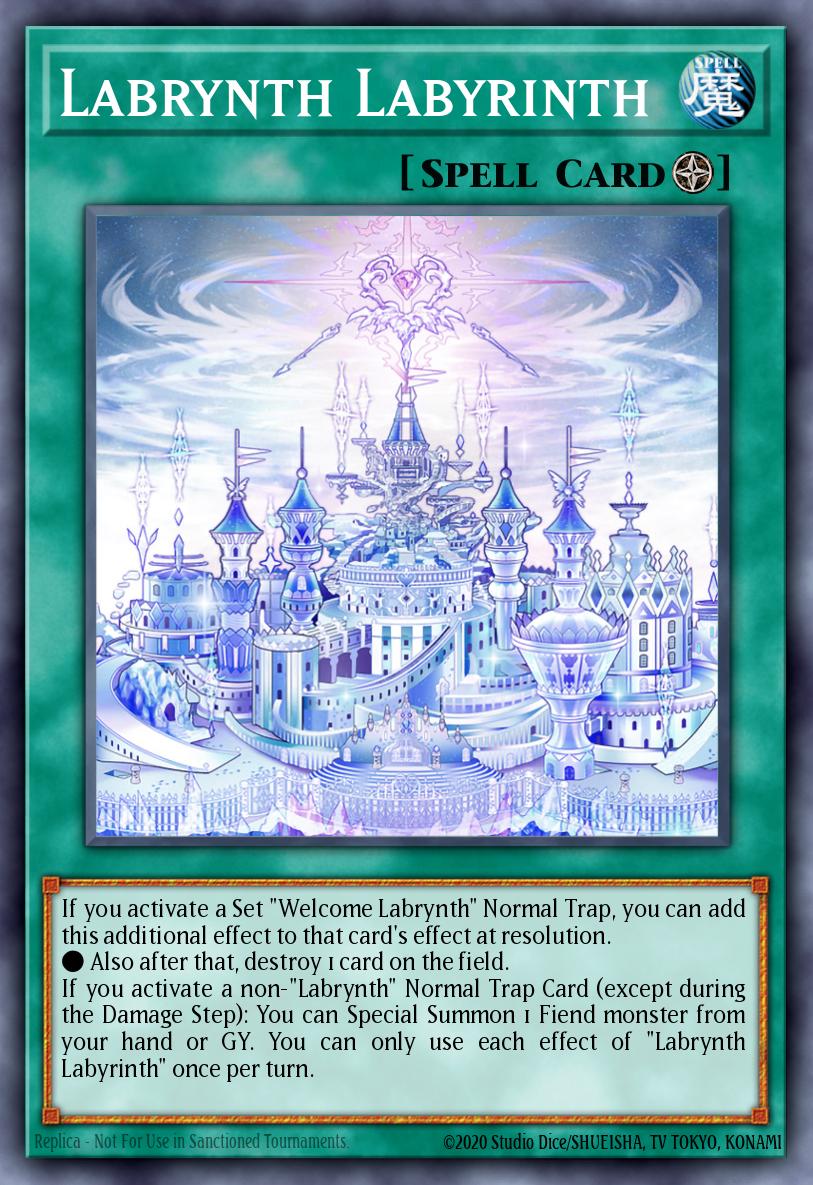
If you activate a Set "Welcome Labrynth" Normal Trap, you can add this additional effect to that card's effect at resolution.
● Also after that, destroy 1 card on the field.
If you activate a non-"Labrynth" Normal Trap Card (except during the Damage Step): You can Special Summon 1 Fiend monster from your hand or GY. You can only use each effect of "Labrynth Labyrinth" once per turn.
Labrynth Labyrinth (also known as LabLab) is the archetypal field spell, but unlike most modern field spells it is not a searcher, but rather keeps with the rest of the archetype’s theme, as it gives our normal traps even more extra value, being both a monster revive/summon from hand for any fiend monsters and once per turn turning a Welcome Labrynth card into a non-targeting pop. Despite the incredible value this card provides, most often it feels horrible to see it in your opening hand, and the fact that it shines the most in slower, more grindy matches can make it feel like it just takes up space that could be better used for other cards versus faster combo decks.
- The (1) effect makes it so our welcome traps get the additional effect to non-target destroy a card on the field, making our welcome traps even more deadly. You do not say at the activation of the welcome trap if you wish to use this effect, but rather reveal this during the resolve of it.
- The (2) effect allows us after a non-Labrynth normal trap has been activated, to special summon any fiend monster from hand or GY. This helps us in various ways, as it gives us easy access to any fiend brought into rotation (especially noteworthy being Arianna and Arias to generate advantage), giving us more bodies for our ED plays, or to bring back some of our boss monsters that got removed, like Lovely or Chaos Angel.
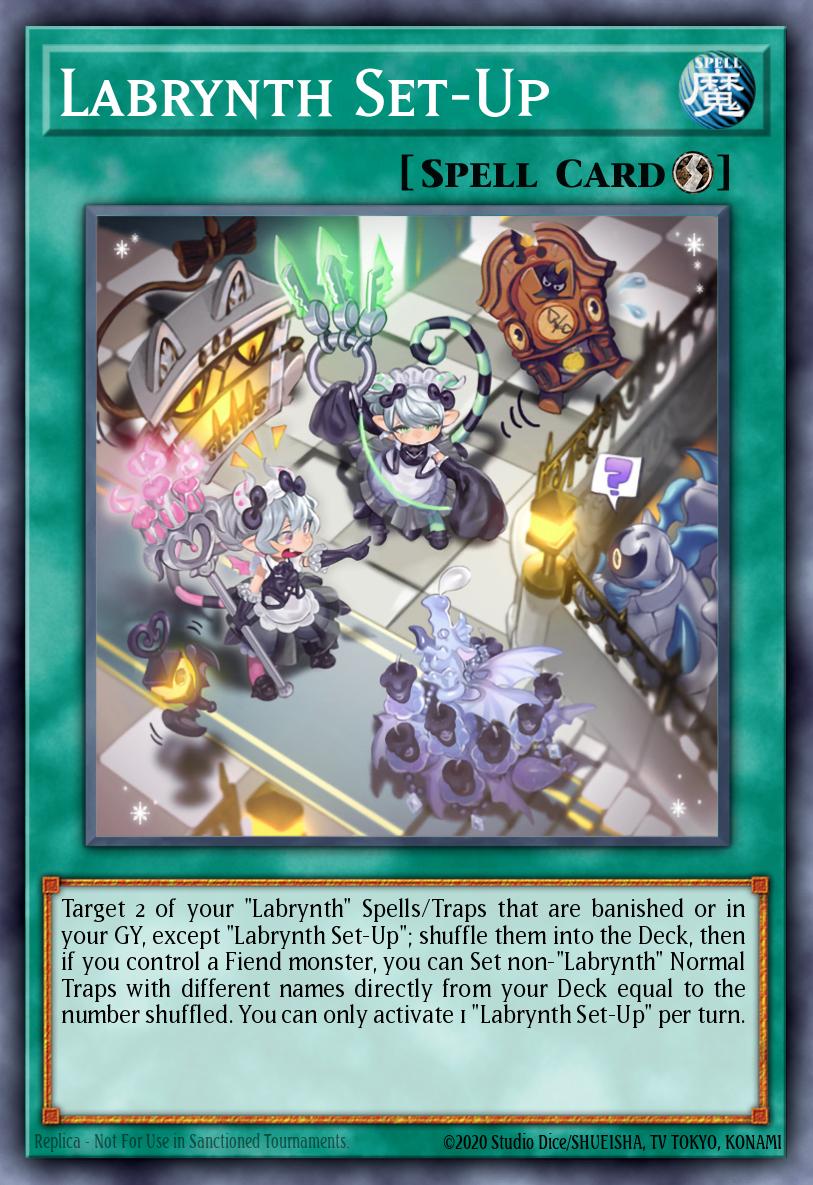
Target 2 of your "Labrynth" Spells/Traps that are banished or in your GY, except "Labrynth Set-Up"; shuffle them into the Deck, then if you control a Fiend monster, you can Set non-"Labrynth" Normal Traps with different names directly from your Deck equal to the number shuffled. You can only activate 1 "Labrynth Set-Up" per turn.
Labrynth Set-up can be a game winning card IF you are able to set it up (pun intended). The ability to set any 2 non-Labrynth normal traps from the deck AND recycle used-up welcomes/field spell that are banished and/or in the GY gives us such a huge swing in advantage that it can win on the spot. The problem is that getting the requirements to activate it is quite tricky, and it being a brick otherwise means that in most builds it’s not worth it. The exception to this are Arias Trap Trick builds, where a single activation of Trap Trick for 2 welcomes gives us both the 2 targets required to be shuffled back and a body on field so we can set 2 traps. This card also has been considered as a side deck option for e.g. the Runick matchup. Please be aware that you must target 2 Labrynth S/T in order to activate, one is not enough, as well as the fact that you are only able to set from the Deck if you control a Fiend (not necessarily a Labrynth monster, just any Fiend).
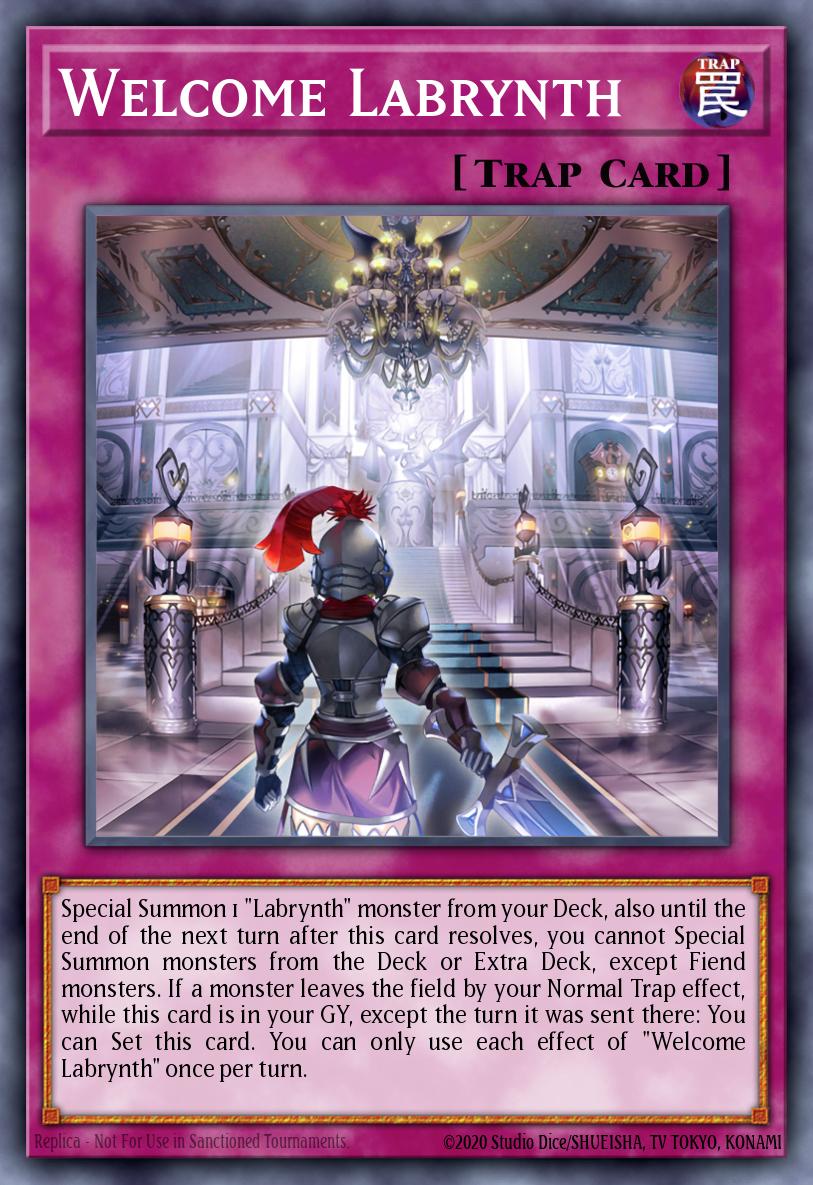
Special Summon 1 "Labrynth" monster from your Deck, also until the end of the next turn after this card resolves, you cannot Special Summon monsters from the Deck or Extra Deck, except Fiend monsters. If a monster leaves the field by your Normal Trap effect, while this card is in your GY, except the turn it was sent there: You can Set this card. You can only use each effect of "Welcome Labrynth" once per turn.
Welcome Labrynth is the archetypal trap version of “Emergency teleport”, allowing us to summon any Labrynth monster that we need in the moment. On top of that, it has a great recycling abilty, giving us very good follow-up.
- The (1) effect is a simple special summon from the deck. What monster you summon with this depends a lot on the game state, however its usually either Lady, Lovely or Arianna. Just be careful of the fiend lock for the deck and ED since it last until the end of the next turn, not this turn.
- The (2) effect allows for Welcome Labrynth to reset itself, if a monster leaves the field by our normal trap effect, as long as this Welcome hasn’t been sent to the GY this turn. This gives us great follow-up, and if you are able to get two in rotation, you can have a welcome live every single turn as long as there are monsters to remove.
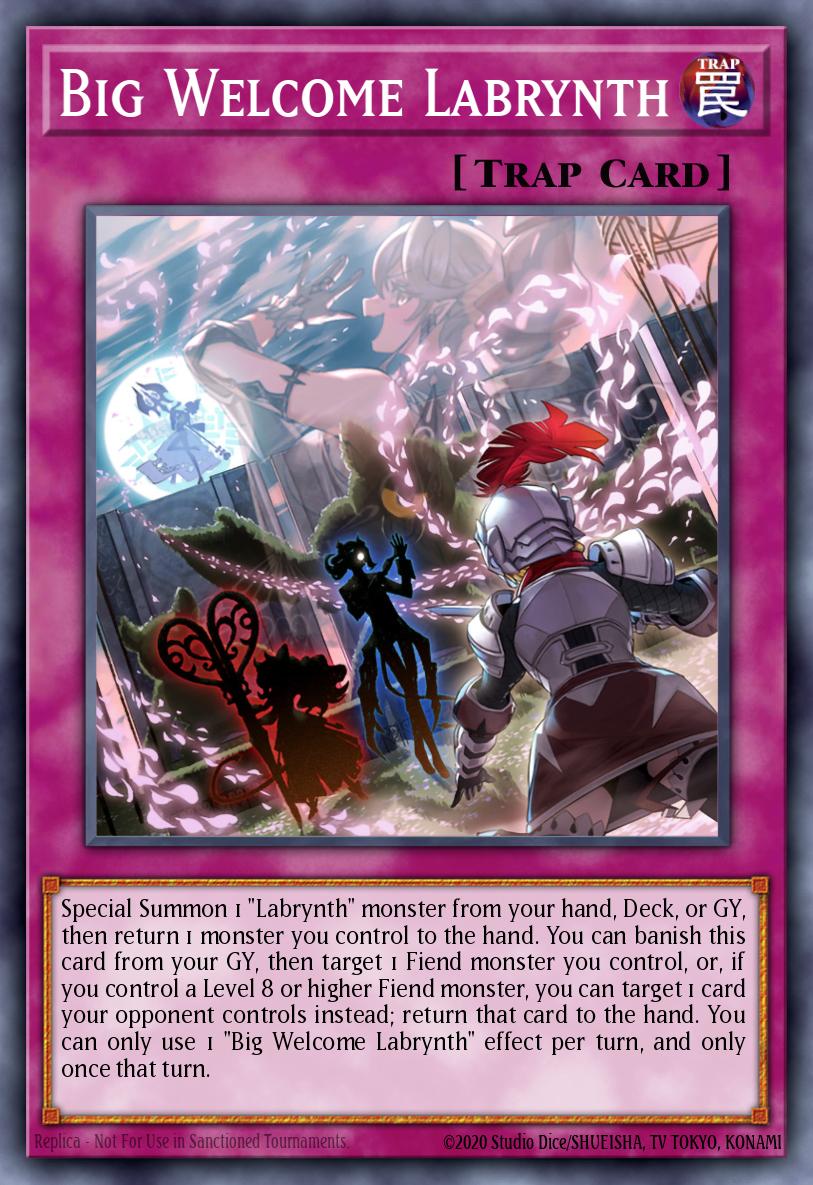
Special Summon 1 "Labrynth" monster from your hand, Deck, or GY, then return 1 monster you control to the hand. You can banish this card from your GY, then target 1 Fiend monster you control, or, if you control a Level 8 or higher Fiend monster, you can target 1 card your opponent controls instead; return that card to the hand. You can only use 1 "Big Welcome Labrynth" effect per turn, and only once that turn.
The card that made us a meta deck, “Big Welcome Labrynth”, just does everything you need. Being not only a starter that also triggers all your Labrynth effects, a way to dodge targeted negation, AND on top of all that, being either follow-up in GY (by allowing you to bounce your own fiend monster to trigger everything) or interruption as long as you have a LV8 or higher fiend. Not only that, but it sort-of dodges backrow destruction. Just let it go to GY, as long as you have a LV8 fiend, you can still use it as removal. However, due to this insane flexibilty of its effect you can only use one effect per turn, and only once that turn, so be careful which one you choose.
- The (1) effect allows us to summon any Labrynth monster from the deck, hand, or GY, and then bounce a monster we control back to the hand. Not only is it another “Emergency teleport”, it allows you to both dodge any targeted effects while also triggering any Labrynth effects AND the bounce happens after the summon, so if you summon Lovely Labrynth or one of the Servants, they can trigger their effect on resolution. Also, do note that the monster you bounce doesn’t need to be a fiend, so you can potentially bounce a Nibiru or Bystial back to the hand, giving you multiple uses out of them.
- The (2) effect allows us to banish it and target a fiend monster we control and return it to the hand, OR if we control a LV8 or higher fiend we can target a card the opponent controls instead. The effect is incredibly powerful and flexible while being hard to interact with. Not only is it an incredibly good removal effect, but it also allows us to, even if all other cards on the field have been removed, normal summon any fiend monster, then bounce it back to trigger every furniture and welcome we have in the GY, allowing us to get back in the game from a top deck position just from a normal summon.
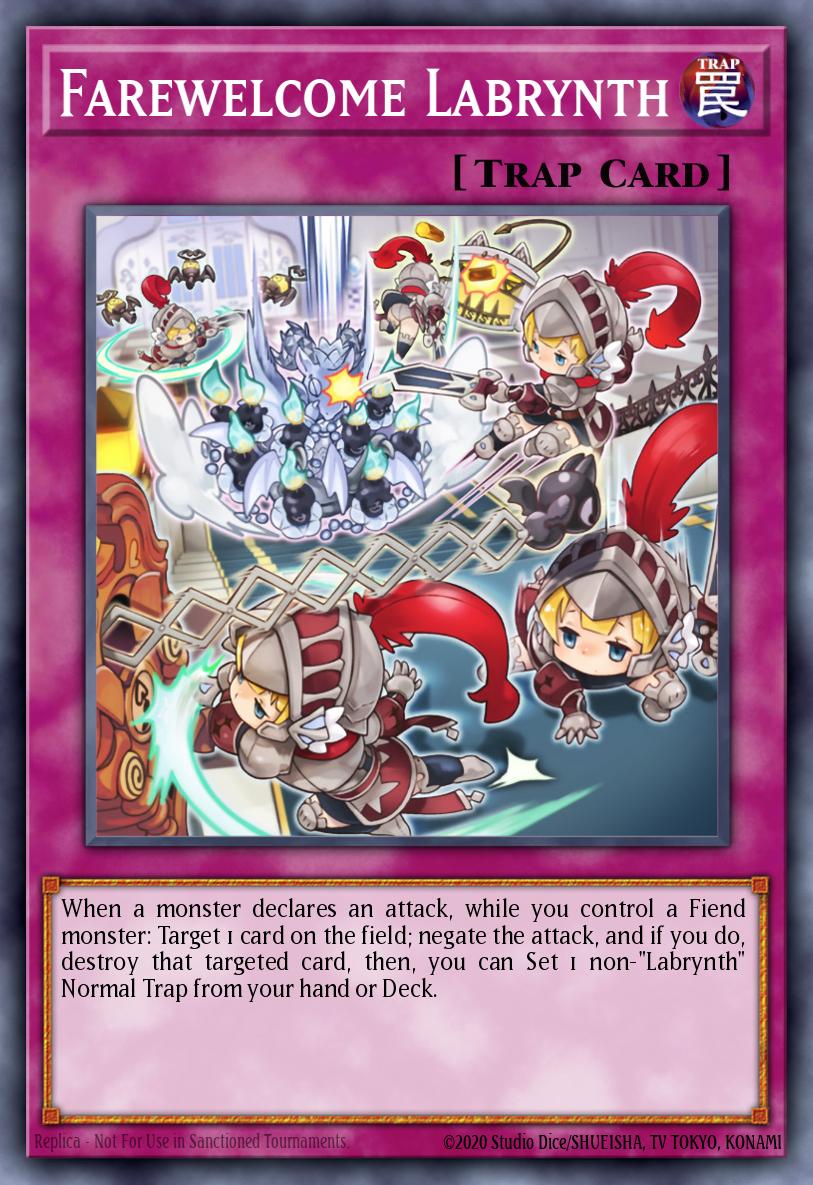
When a monster declares an attack, while you control a Fiend monster: Target 1 card on the field; negate the attack, and if you do, destroy that targeted card, then, you can Set 1 non-"Labrynth" Normal Trap from your hand or Deck.
The second welcome trap that was initially released, “Farewelcome Labrynth”, is a battle trap that, on paper, has a really strong effect. The problem comes from the fact that it’s a battle trap, which haven’t been meta relevant for ages. The only place this card does have a good use in are draft/sealed environment where decks have a harder time removing cards, but outside of that, the card is not generally recommended. And if you are still not convinced, let’s put it this way: Would you rather set this or “Big Welcome Labrynth” with your furniture? Farewelcome only has one effect: when an attact is declared (that also includes your own) and you control a fiend, you can activate it by targeting a card on the field, negate that attack and then destroy that card, then can set any non Labrynth normal trap from the deck/hand. In theory, it looks like a strong effect popping a card while also grabbing another trap from the deck, but it falls short due to being activatable only when an attack is declared, so most of the time the opponent just removes it before it has the chance to activate.

When you activate a Set Normal Trap Card, except "Labrynth Barrage": This effect becomes that Normal Trap's effect when that card is activated, also until the end of your opponent's next turn after this card resolves, your opponent takes no effect damage from your card effects.
The worst card in the archetype with almost no redeeming qualities, “Labrynth Barrage”, was Konami’s attempt at designing an in archetypal transaction rollback, but instead they decided to make it almost impossible to use for some reason. The fact that it’s a “when” effect similar to Lady makes it so you MUST chain it directly to a normal trap to when you use it, so most of the time it will just sit on the field not doing anything as you are getting chain blocked, and if you somehow you do manage to use it, there is almost no situation where you want to use the same trap twice on the same chain. But hey, at least the trap has an effect damage restriction, so no coping burn traps. Overall, just save yourself the headache and don’t play it.
